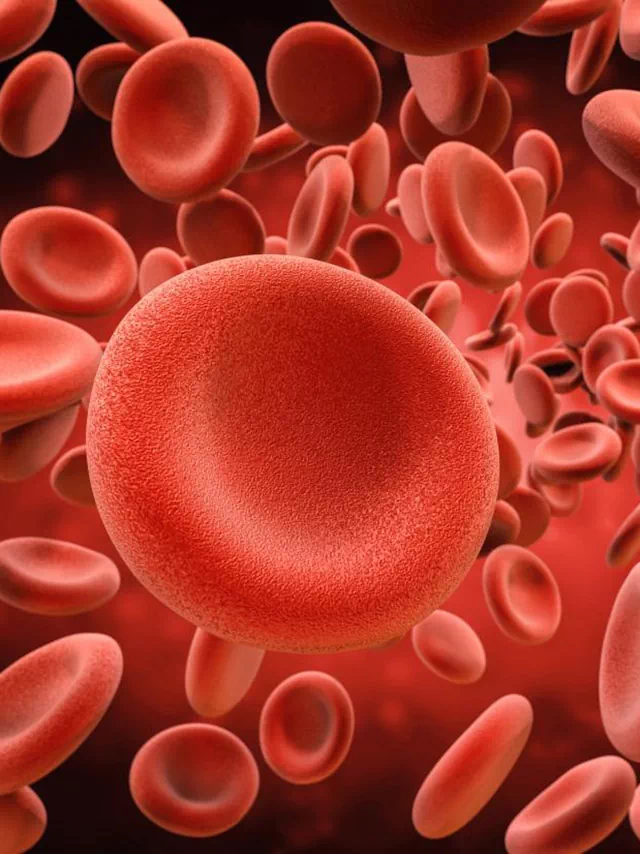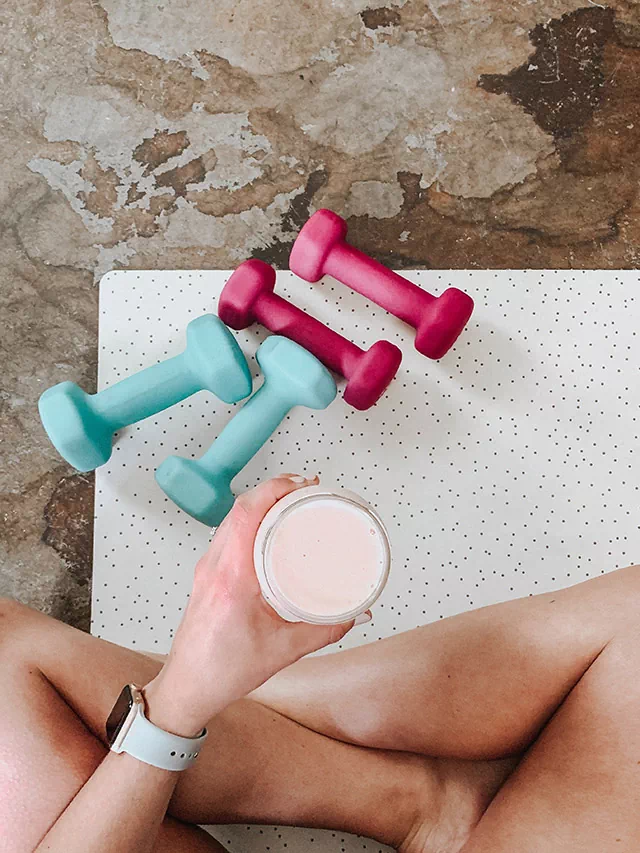High blood sugar, also known as hyperglycemia, is associated with diabetes, a disease that can cause heart attack, heart failure, stroke, and kidney failure. High blood sugar occurs when your body fails to produce enough insulin or use insulin efficiently. The Centers for Disease Control and Prevention estimates 13% of all Americans and 25% of those 65 or older suffer from it.
What is blood sugar?
Blood sugar, also known as blood glucose, is the amount of glucose (a type of sugar) present in the bloodstream. Glucose is the primary source of energy for the body’s cells, and it comes from the food we eat, mainly carbohydrates. The body needs to maintain a stable blood sugar level, as too much or too little glucose in the bloodstream can cause various health problems. The hormone insulin, which is produced by the pancreas, helps regulate blood sugar levels by moving glucose from the blood into the body’s cells where it can be used for energy or stored for later use. High blood sugar, or hyperglycemia, can occur when the body doesn’t produce enough insulin or when the body’s cells become resistant to insulin. This can be a symptom of diabetes. On the other hand, low blood sugar, or hypoglycemia, can occur when there is too much insulin in the bloodstream, or when there isn’t enough glucose available for the body’s needs.
Simple steps you can take to lower your blood sugar levels naturally:
1. Exercise regularly
- Regular exercise can help improve your insulin sensitivity, which means your cells can better use the sugar in your blood, reducing blood sugar levels. Good forms of exercise include weightlifting, walking briskly, running, bicycling, dancing, hiking, and swimming.
- Regular exercise can help you reach and maintain a moderate weight and increase insulin sensitivity .
- Increased insulin sensitivity means your cells can more effectively use the available sugar in your bloodstream.
- Exercise also helps your muscles use blood sugar for energy and muscle contraction.
- If you have problems with blood sugar management, consider routinely checking your levels before and after exercising. This will help you learn how you respond to different activities and keep your blood sugar levels from getting too high or low .
- What’s more, researchers recommend doing so-called “exercise snacks” to lower blood sugar and prevent the damage that sitting all day can do.
- Exercise snacks simply mean that you break up your sitting time every 30 minutes for just a few minutes throughout the day. Some of the recommended exercises include light walking or simple resistance exercises like squats or leg raises.
- Other useful forms of exercise include weightlifting, brisk walking, running, biking, dancing, hiking, swimming, and more. In fact, any activity that regularly gets you up and moving — regardless of the intensity — beats a sedentary lifestyle.
- Plus, know that if you have trouble dedicating longer periods to exercise throughout the week, you can still gain many benefits by doing shorter sessions. For example, try aiming for 10-minute exercise sessions 3 times a day for 5 days, with the goal of 150 minutes per week.
2. Manage your carbs
- You body converts carbs into sugar, then insulin helps your body to use and store sugar for energy. You can help your body control your blood sugar by monitoring carb intake and planning meals. A low-carb diet helps prevent sugar spikes – and can have long-term benefits.
- Your carb intake strongly influences your blood sugar levels.
- Your body breaks carbs down into sugars, mainly glucose. Then, insulin helps your body use and store it for energy.
- When you eat too many carbs or have insulin-function problems, this process fails, and blood glucose levels can rise.
- That’s why the American Diabetes Association (ADA) recommends that people with diabetes manage their carb intake by counting carbs and being aware of how many they need.
- Some studies find that this can help you plan your meals appropriately, further improving blood sugar management.
- Many studies also show that eating a low carb diet helps reduce blood sugar levels and prevent blood sugar spikes.
- It’s important to note that low carb diets and no carb diets are not the same.
- You can still eat some carbs when monitoring your blood sugar. However, prioritizing whole grains over processed ones and refined carbs provides greater nutritional value while helping decrease your blood sugar levels
3. Eat more fiber
- Fiber slows your body’s digestion of carbohydrates and sugar absorption. That means it promotes more gradual increases in blood sugar levels. All kinds of fiber are good for the body, but soluble fiber is best for improving blood sugar control. High fiber diets also help manage type 1 diabetes by helping the body regulate blood sugar. High fiber foods include fruit, vegetables, beans, and whole grains.
- Fiber slows carb digestion and sugar absorption, thereby promoting a more gradual rise in blood sugar levels.
- There are two types of fiber — insoluble and soluble.
- While both are important, soluble fiber has explicitly been shown to improve blood sugar management, while insoluble fiber hasn’t been shown to have this effect.
- A high fiber diet can improve your body’s ability to regulate blood sugar and minimize blood sugar lows. This could help you better manage type 1 diabetes .
- Foods that are high in fiber include:
- vegetables
- fruits
- legumes
- whole grains
- The recommended daily intake of fiber is about 25 grams for women and 35 grams for men. That’s about 14 grams for every 1,000 calories.
- 4. Drink water and stay hydrated
- Drinking enough water could help you keep your blood sugar levels within healthy ranges.
- In addition to preventing dehydration, it helps your kidneys flush out any excess sugar through urine.
- One review of observational studies showed that those who drank more water had a lower risk of developing high blood sugar levels.
- water regularly may rehydrate the blood, lower blood sugar levels, and reduce diabetes risk.
- Keep in mind that water and other zero-calorie drinks are best. Avoid sugar-sweetened options, as these can raise blood glucose, drive weight gain, and increase diabetes risk
4. Drink plenty of water
- Drinking plenty of water helps your kidneys flush out excess sugar. One study found that people who drink more water lower their risk for developing high blood sugar levels. And remember, water is the best. Sugary drinks elevate blood sugar by raising it even more.
- Drinking enough water could help you keep your blood sugar levels within healthy ranges.
- In addition to preventing dehydration, it helps your kidneys flush out any excess sugar through urine.
- One review of observational studies showed that those who drank more water had a lower risk of developing high blood sugar levels
- Drinking water regularly may rehydrate the blood, lower blood sugar levels, and reduce diabetes risk
- Keep in mind that water and other zero-calorie drinks are best. Avoid sugar-sweetened options, as these can raise blood glucose, drive weight gain, and increase diabetes risk
5. Eat moderate portions
- Portion control helps reduce the calories you eat, which helps you maintain a moderate weight. Controlling your weight promotes healthy blood sugar levels and reduces the risk of developing type 2 diabetes.
- ortion control can help you regulate your calorie intake and maintain a moderate weight.
- Consequently, weight management promotes healthy blood sugar levels and has been shown to reduce the risk of developing type 2 diabetes.
- Monitoring your serving sizes also helps prevent blood sugar spikes.
- Here are some helpful tips for managing portion sizes:
- measure and weigh your portions
- use smaller plates
- avoid all-you-can-eat restaurants
- read food labels and check the serving sizes
- keep a food journal
- eat slowly
6. Manage your stress
- Stress also affects blood sugar levels. Exercise, relaxation techniques, and meditation can help to reduce stress and blood sugar levels.
- When stressed, your body secretes hormones called glucagon and cortisol, which cause blood sugar levels to rise
- One study including a group of students showed that exercise, relaxation, and meditation significantly reduced stress and lowered blood sugar levels.
- Exercises and relaxation methods like yoga and mindfulness-based stress reduction may also help correct insulin secretion problems among people with chronic diabetes
7. Get enough sleep
- Poor sleeping habits can increase appetite and promote weight gain, affecting blood sugar. Sleep deprivation increases cortisol levels – which are essential to managing blood sugar.
- Getting enough sleep feels excellent and is necessary for good health .
- In fact, poor sleeping habits and a lack of rest can affect blood sugar levels and insulin sensitivity, increasing the risk of developing type 2 diabetes. They can also increase appetite and promote weight gain.
- Additionally, sleep deprivation raises levels of the hormone cortisol, which, as explained, plays an essential role in blood sugar management.
- Adequate sleep is about both quantity and quality. The National Sleep Foundation recommends that adults get at least 7–8 hours of high quality sleep per night .
- To improve the quality of your sleep, try to:
- follow a sleep schedule
- avoid caffeine and alcohol late in the day
- get regular exercise
- cut down on screen time before bed
- keep your bedroom cool
- limit your naps
- create a bedtime routine
- use soothing and calming scents such as lavender
- avoid working in your bedroom
- take a warm bath or shower before bed
- try meditation or guided imagery
8. Eat foods that are rich in chromium and magnesium
- High blood sugar levels are linked to deficiencies in minerals like chromium and magnesium, which regulate blood sugar. Chromium-rich foods include meats, fruit, vegetables, and nuts. Magnesium-rich foods include dark, leafy greens, squash and pumpkin seeds, tuna, whole grains, dark chocolate, bananas, and beans.
- High blood sugar levels and diabetes have been linked to micronutrient deficiencies. Some examples include deficiencies in the minerals chromium and magnesium.
- Chromium is involved in carb and fat metabolism. It may potentiate the action of insulin, thus aiding blood sugar regulation.
- Chromium-rich foods include:
- meats
- whole grain products
- fruit
- vegetables
- nuts
- However, the mechanisms behind this proposed connection are not entirely known, and studies report mixed findings. As such, more research is needed.
- Magnesium has also been shown to benefit blood sugar levels. In fact, diets rich in magnesium are associated with a significantly reduced risk of diabetes.
- In contrast, low magnesium levels may lead to insulin resistance and decreased glucose tolerance in people with diabetes.
- That said, if you already eat plenty of magnesium-rich foods and have adequate blood magnesium levels, you likely won’t benefit from taking magnesium supplements.
- Magnesium-rich foods include:
- dark leafy greens.
- squash and pumpkin seeds
- tuna.
- whole grains
- dark chocolate
- bananas
- avocados
- beans
9. Monitor your sugar levels
Monitoring blood glucose levels can help you better manage them. You can do so at home using a portable blood glucose meter, which is known as a glucometer. You can discuss this option with your doctor. Keeping track allows you to determine whether you need to adjust your meals or medications. It also helps you learn how your body reacts to certain foods. Try measuring your levels regularly every day and keeping track of the numbers in a log. Also, it may be more helpful to track your blood sugar in pairs — for example, before and after exercise or before and 2 hours after a meal. This can show you whether you need to make small changes to a meal if it spikes your blood sugar, rather than avoiding your favorite meals altogether. Some adjustments include swapping a starchy side for non-starchy veggies or limiting them to a handful.
10. Consider adding specific foods to your diet.
Multiple foods and plants are known to have medicinal properties. However, the overall quality of evidence on these ingredients is low due to insufficient human studies or small sample sizes. Therefore, no conclusive recommendations can be made regarding their use. Some of the foods touted to have anti-diabetes effects include.
- Apple cider vinegar. According to older research, this ingredient may reduce blood sugar levels by delaying the emptying of your stomach after a meal.
- Cinnamon. This spice may improve blood sugar levels by enhancing insulin sensitivity and slowing the breakdown of carbs in your digestive tract. This moderates the rise in blood sugar after a meal. Nevertheless, more research is needed.
- Berberine. Research suggests that this compound lowers blood sugar by stimulating enzymes’ breakdown of glucose, promoting your tissue’s use of sugar and increasing insulin production
- Fenugreek seeds. While more high quality studies in humans are needed, there is some evidence that fenugreek may help support blood sugar management.
It’s essential to talk with your doctor before adding any of these foods to your diet if you’re already taking blood-sugar-lowering medications, as some herbal supplements may negatively interact with them. Finally, the Food and Drug Administration (FDA) does not regulate supplements in the same way that it regulates prescription medications. As such, it’s important to purchase supplements that have been tested by an independent lab for purity and ingredient content.
11. Eat probiotic-rich foods
Probiotics are friendly bacteria that offer numerous health benefits, including improved blood sugar regulation. Research shows that probiotic intake may lower fasting blood sugar, glycated hemoglobin (HbA1c), and insulin resistance in people with type 2 diabetes. Interestingly, studies have found that improvements in blood sugar levels are more significant in people who consume multiple species of probiotics and for at least 8 weeks.
Probiotic-rich foods include fermented foods, such as:
- yogurt, as long as the label states that it contains live active cultures
- kefir
- tempeh
- sauerkraut
- kimchi
How Is Blood Sugar Tested?
Blood sugar is often tested with a glucometer, which measures the amount of glucose in a sample of blood. A small drop of blood from the fingertip or arm is placed on a test strip and inserted into the glucometer. The results display on the glucometer’s LCD screen within a few seconds. Another way to test blood sugar is via continuous glucose monitoring (CGM), which typically involves placing a disposable, water-resistant sensor on the back of the arm or stomach. These sensors can be scanned with a reader, and can be used for three to 14 days, depending on the brand. Many CGM sensors are used along with a smartphone, allowing the individual and others (such as caregivers) the ability to see glucose trends over the last eight hours. Those living with diabetes usually check their blood sugar levels several times a day, including before meals and snacks and two hours after eating. In certain cases, a doctor may also order other tests, such as a fasting glucose test or an oral glucose tolerance test. These tests measure the glucose levels in the blood at specific times (fasting or after eating).
Check Your Blood Sugar Often.
Checking your blood sugar levels often and writing down, or using an app to track the results will tell you how well you are managing your diabetes. Talk to your doctor and diabetes educator about how often you should check your blood sugar.
- Not everyone with diabetes needs to check their blood sugar every day. But some people may need to check it many times a day.
- If you have type 1 diabetes, check your blood sugar at least 4 times a day.
Usually, you will test your blood sugar before meals and at bedtime. You may also check your blood sugar:
- After you eat out, particularly if you have eaten foods you don’t normally eat
- If you feel sick
- Before and after you exercise
- If you have a lot of stress
- If you eat too much
- If you are taking new medicines that can affect your blood sugar
Keep a record for yourself and your provider. This will be a big help if you are having problems managing your diabetes. It will also tell you what works and what doesn’t work, to keep your blood sugar under control. Write down:
- The time of day
- Your blood sugar level
- The amount of carbohydrates or sugar you ate
- The type and dose of your diabetes medicines or insulin
- The type of exercise you do and for how long
- Any unusual events, such as feeling stressed, eating different foods, or being sick
Many glucose meters let you store this information.
When to Talk With a Doctor About Blood Sugar.
Diabetes is a serious condition, and it’s important to talk to your doctor if you’re concerned about your blood sugar levels. Your provider can order tests to confirm a diagnosis of diabetes or prediabetes and provide treatment recommendations. They may also suggest lifestyle changes to help keep your blood sugar within the recommended target range. Taking steps to monitor and manage your blood sugar levels is key to maintaining good health and avoiding the long-term complications of diabetes. With proper care and regular check-ups, it’s very possible to manage your blood sugar levels.
It’s important to note that these are general guidelines, and blood sugar levels can vary depending on various factors, such as individual health conditions, medications, and activity level. It’s always best to consult with a healthcare professional to determine the appropriate blood sugar level ranges for you or a loved one.





